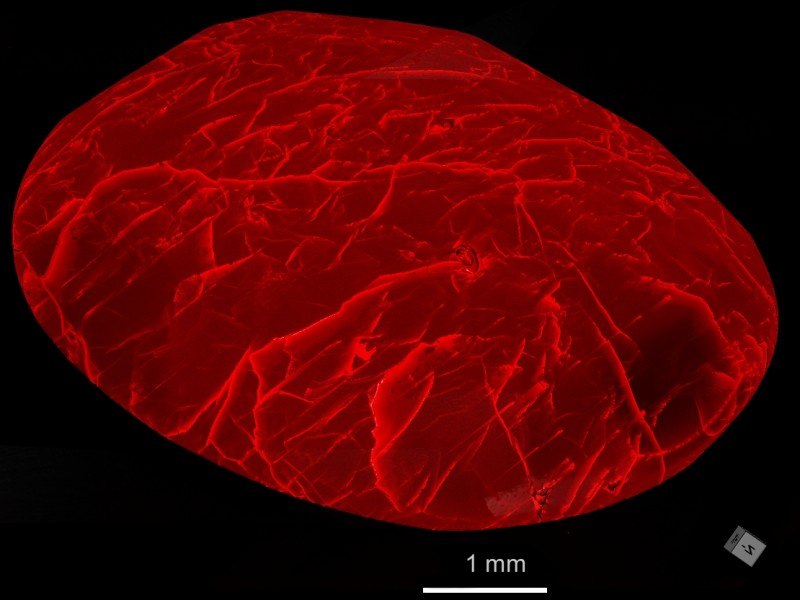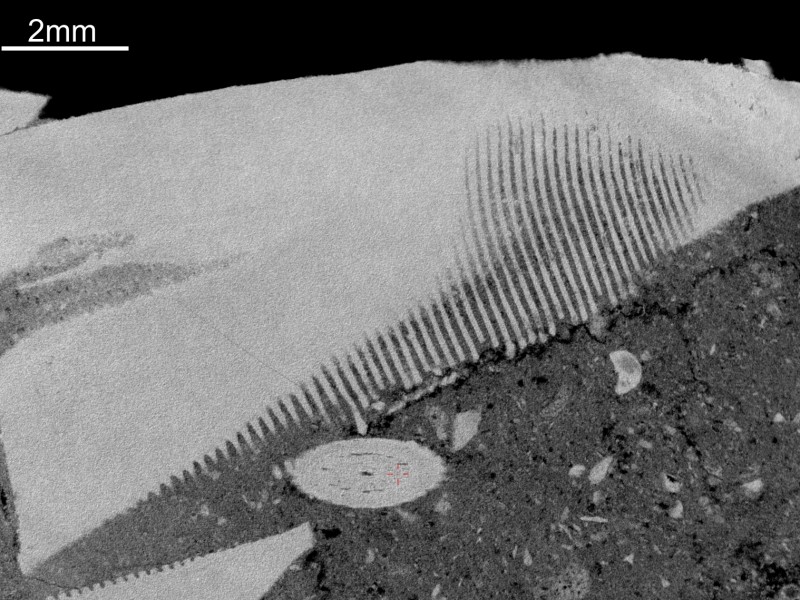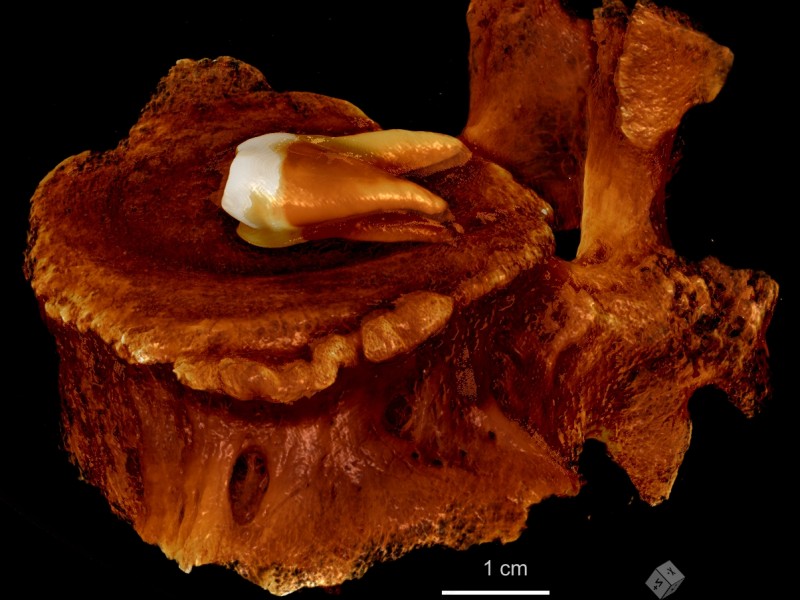Samples and preparation
X-ray microtomography is suitable for characterizing many objects in the collections of the Natural History Museum, provided
that they are transparent for X-rays and have a size of 530 mm Ø × 800 mm height and a weight of a maximum of 30 kg. The sample
surface does not have to be specially prepared, as is the case with electron microscopy, for example. For soft tissue, which
has a very low X-ray density, suitable staining techniques based on metal solutions are recommended to improve the tissue
contrast based on absorption, and appropriate fixation. The following applies to all samples: the attachment of the sample
during the scan is decisive for the image quality; the less the sample moves, the sharper the image.
In principle, samples of any shape can be examined, but a cylindrical geometry is best. The sample size can range from a few millimeters to several centimeters. The most important prerequisites for a good image are that the sample allows enough transmission, has a sufficiently high tissue contrast and is firmly fixed during the scan. It is possible to radiate only through individual areas of a sample or to stack several small objects on top of each other (e.g. a drill core or several flies stacked inside an X-ray transparent holder).




